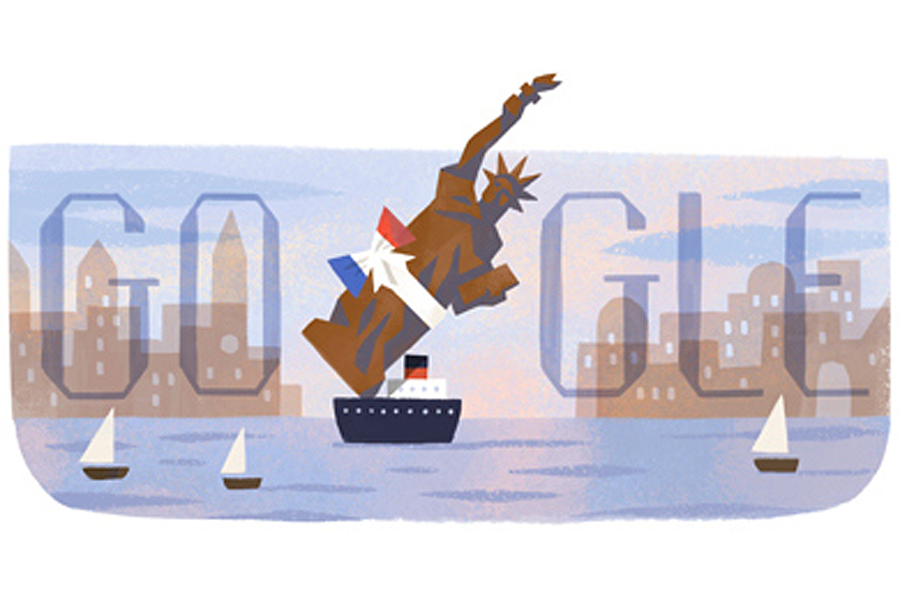Google marks anniversary of Statue of Liberty's arrival in New York Harbor
Open up Google today and you’ll see an image of the Statue of Liberty balancing precariously on oceangoing vessel. Today marks the 130th anniversary of the Statue of Liberty’s arrival in New York Harbor. To honor the occasion, here are 5 facts about the iconic statue.
1. How did the Statue of Liberty arrive at Ellis Island?
On June 17, 1885, Lady Liberty arrived at Bedloe's Island (renamed Liberty Island in 1956) in 350 separate pieces in 200 boxes after it made its nearly one-month journey across the Atlantic Ocean from France. Construction of “Lady Liberty Lighting the World” was a feat within itself, as the design and build of the statue began in France before sufficient funds had been collected for the project.
2. Why is it green?
The skin of the statue is copper, and for its first two decades, it was a reddish brown color. But by the early 1900s, a patina had formed on the metal through oxidation and since then a number of other chemical reactions have led to the current blue-green tint the statue has today.
3. Who was the statue modeled after and how was it designed?
The sculpture was designed by Frédéric Auguste Bartholdi, a French sculptor, who modeled the statue after his mother. Barthodi visited the island in 1871 and immediately felt it was the perfect location for a statue that would commemorate the American Revolution and symbolize the friendship between France and the United States. Gustave Eiffel, who later designed the Eiffel Tower, also helped create the statue. When the statue arrived in the United States, the design was overseen by Richard Morris Hunt, and the remaining funds needed for the completion of the project were collected by Joseph Pulitzer through a press campaign.
4. How did it survive an attack in WWI?
In 1916, the statue was impacted by an explosion set off by the Germans as a homeland attack in retaliation for the British naval blockade of Germany. The explosion occurred on Black Tom Island, a pier that stands opposite Ellis Island. Shock waves from the attack were felt 90 miles away and the arm which holds the torch aloft sustained damages in excess of $100,000.
5. How did the statue disappear in 1983?
In 1983, illusionist David Copperfield had the Statue of Liberty disappear and reappear in front of a live audience. At the time, the event stunned and amazed both the live audience and those watching the televised event. Since 1983, it has been suggested that Mr. Copperfield was able to accomplish the feat by rotating the platform the audience was on in order to make it appear as through the 204-ton statue had vanished.







